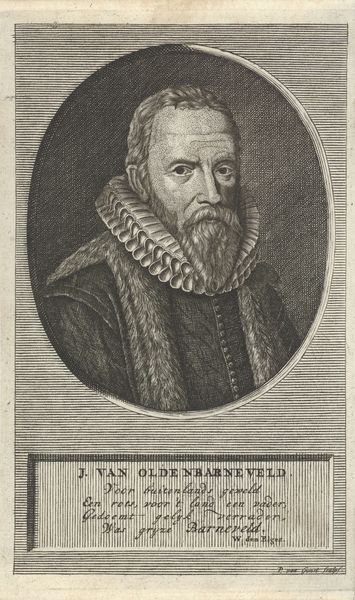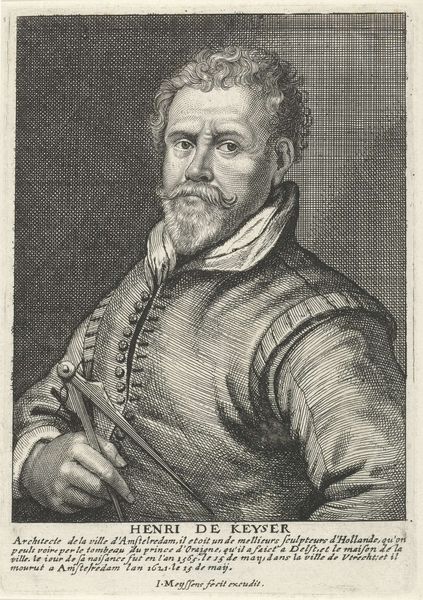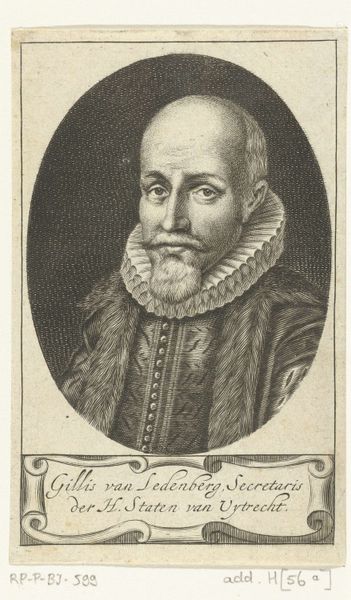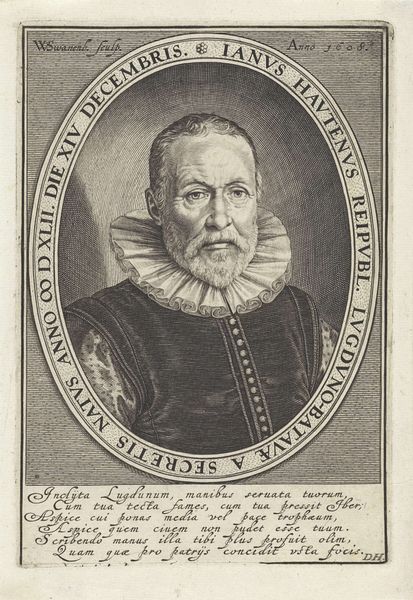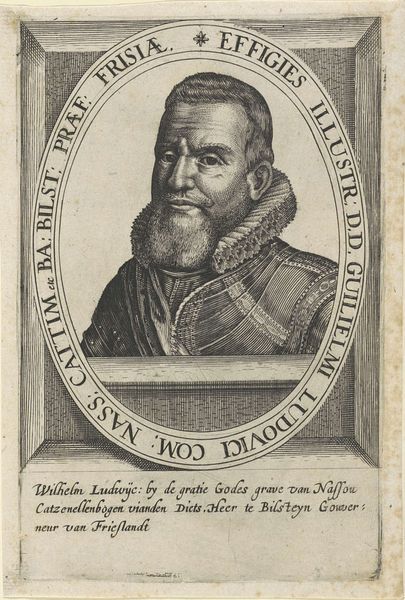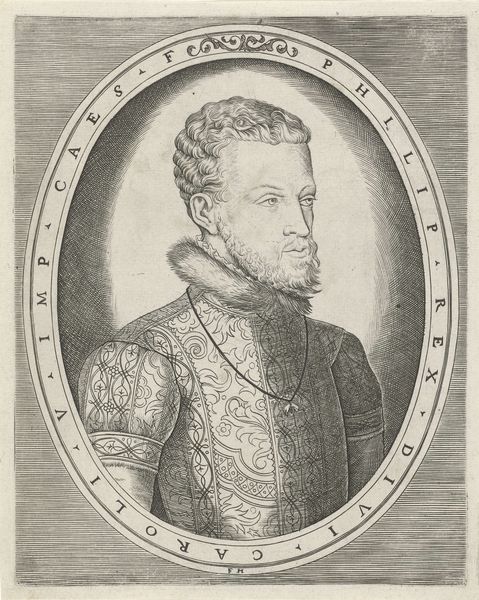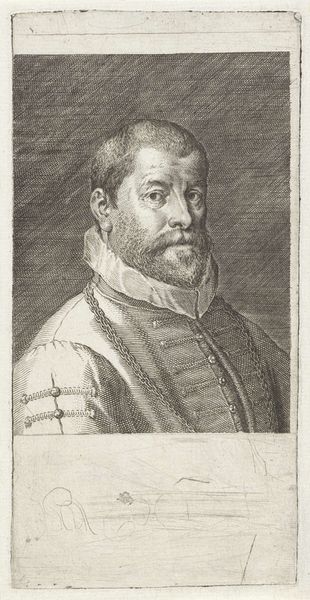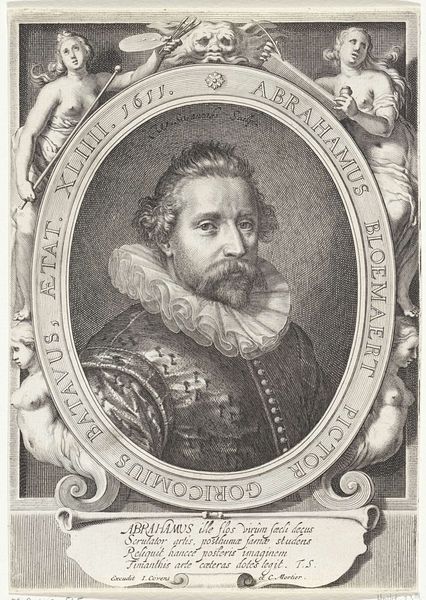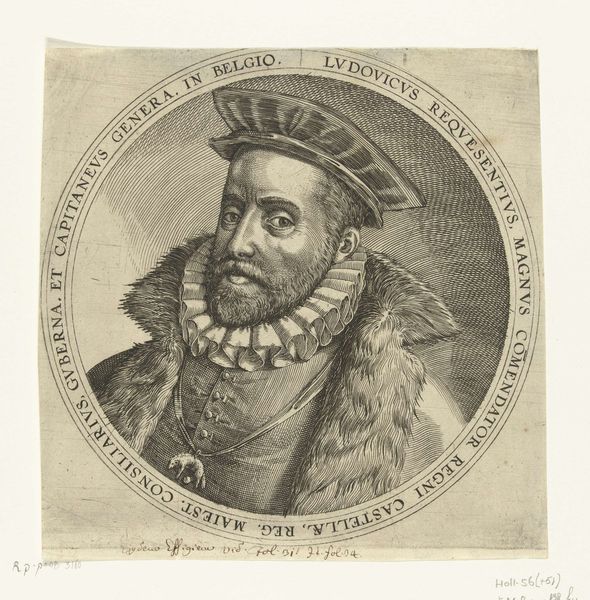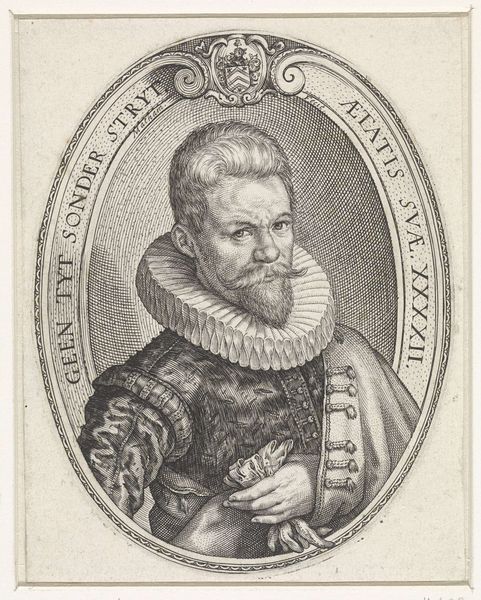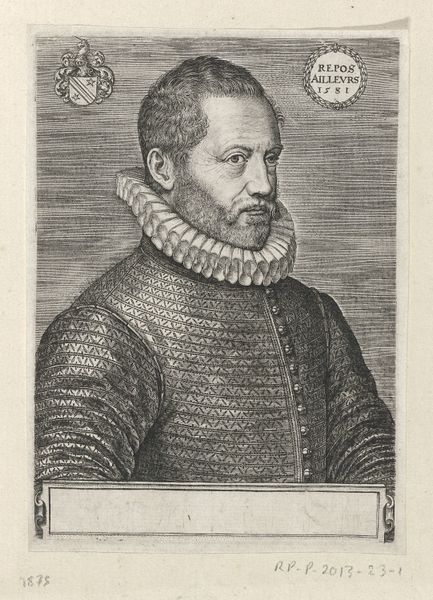
print, engraving
#
portrait
#
baroque
# print
#
figuration
#
line
#
history-painting
#
academic-art
#
engraving
Dimensions: height 309 mm, width 193 mm
Copyright: Rijks Museum: Open Domain
This is Jeremias Falck's 1644 engraving portraying Tycho Brahe, where we see a man adorned in the symbols of his time. Consider the elaborate ruff around Brahe's neck, a symbol of status and refinement during the 17th century. This motif of the embellished collar reminds us of the drapery in Renaissance portraits, where fabric folds were used to convey wealth and sophistication. Yet, here, the ruff seems to cage the head, almost like a halo, which is not unlike the symbolic disks circling the heads of divine figures in ancient art. Notice the emotional tension in Brahe's eyes, a silent intensity that speaks to the psychological weight of knowledge and discovery. This piercing gaze can be traced through centuries, appearing in self-portraits of other intellectuals, such as those of Leonardo da Vinci. The eyes—windows to the soul—reflect not only individual character but also a shared human yearning for understanding. These visual echoes across time reveal how gestures and symbols migrate, adapt, and persist, reminding us of art's power to connect us to our collective cultural psyche.
Comments
No comments
Be the first to comment and join the conversation on the ultimate creative platform.
